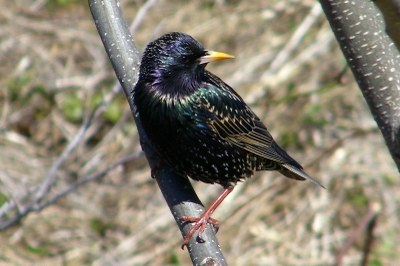Texas Most Unwanted Plants and Animals

TPW Magazine, January 2010
If you don't have a copy of the TPW magazine, you may print a copy of Alien Invaders!.
Be on the look out for invasive species!
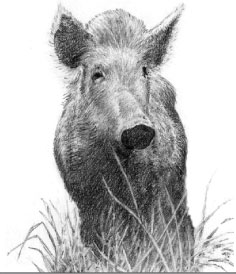
Feral hogs are domestic hogs that either escaped or were released for hunting purposes. The word "feral" (pronounced fair-el) means wild. As the hog reproduces, each generation loses more of their domestic (tame) characteristics and develops the traits needed for survival in the wild. Feral hogs cause damage to crops and habitats and compete with wildlife and livestock. What's the difference between feral hogs and javelina? Learn even more about feral hogs.
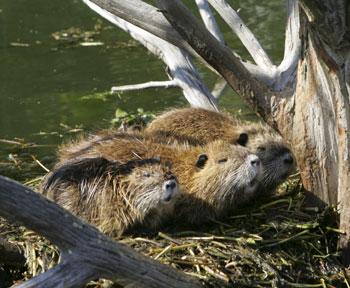
Nutria is a medium-sized, grayish-brown rodent with a long, round tail with few hairs. It looks like a beaver without the large flat tail, and has hind webbed feet. Nutria are found from Central Texas eastward and on the Texas Coast in marshes, swamps, ponds and lakes. Nutria can cause damage by burrowing which can lead to erosion, damage roads and more. Nutria also eat aquatic vegetation. This can kill off aquatic vegetation, causing erosion and loss of habitat for other species.
European Starlings were purposely brought to the United States and spread quickly. Starlings compete with native birds and destroy crops. Starlings take over nest cavities, forcing out bluebirds, flickers, and other woodpeckers that nest in holes.
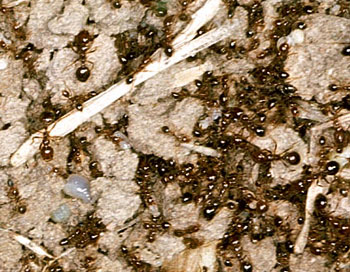
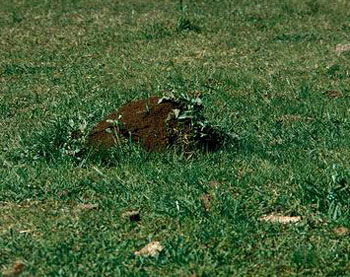
Ouch! Have you have ever been bitten by a Red imported fire ant? Although Texas has some native fire arts, the red imported fire ants came from South America, most likely in some soil carried in on a ship docking in Alabama. These fire ants spread rapidly across the southern United States. Red imported fire ants damage electrical wiring and some crops. Their stings are painful and they will sting repeatedly. Their mounds can be large and interfere with people's activities.
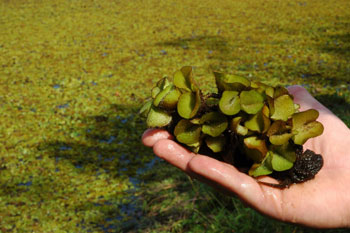
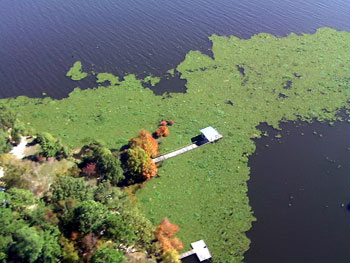
Giant salvinia (Salvinia molesta) is a floating fern from southern Brazil. It damages aquatic ecosystems by outgrowing and replacing native plants that provide food and habitat for native animals and waterfowl. It blocks out sunlight and decreases oxygen in water, often killing fish and other aquatic animals. When mats of salvinia die and decompose, it lowers oxygen in the water even more. Giant salvinia spreads very rapidly. It can double in about a week.
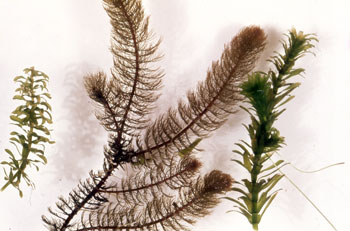
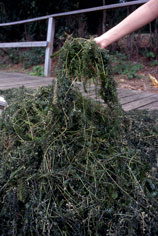
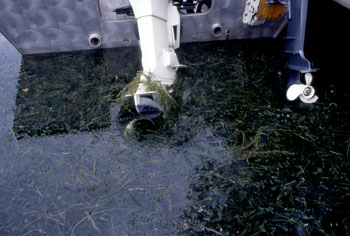
Hydrilla spreads thickly, deeply and rapidly. Hydrilla can grow up to 1 inch in a day! Its roots are in the bottom of the water and it grows until it reaches the surface, up to 30 feet! Hydrilla can choke the oxygen out of water and even change the water's pH, harming fish plants and other aquatic life. Its long stalks are a problem for boaters and swimmers. Hydrilla comes from Asia and is used in aquariums. Hydrilla was mostly likely spread by people dumping aquarium water into lakes, rivers and streams.
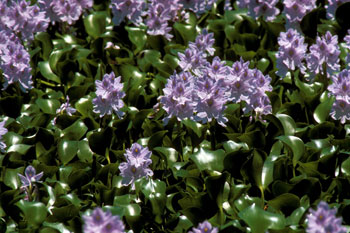
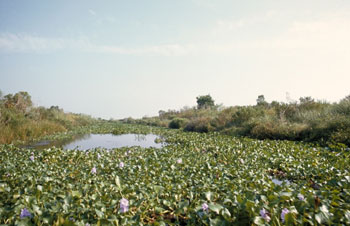
Water hyacinth is native to South America. It produces beautiful flowers, but under the water, its roots grow into a thick mat and spread rapidly. Like other invasive aquatic plants, the water hyacinth can block sunlight, reduce oxygen in the water and kill plants that provide food for fish and other aquatic life. The thick plants block boats and sometimes water flow. Water hyacinth can be a home to mosquitoes and increase their numbers.
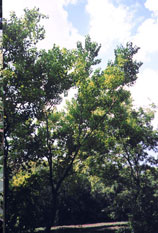
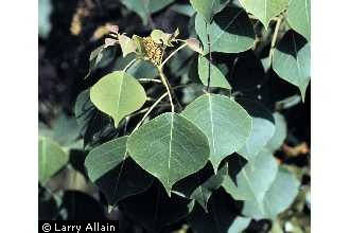
The Chinese tallow tree may have been brought to the United States by Benjamin Franklin. It is planted in landscapes, but can easily spread beyond someone's yard. Chinese tallow is a tall tree that can grow in many types of habitats. It damages wetlands and takes over forests. Once it starts to grow, it spreads by roots and seeds. It can quickly take over a forest until it is the only type of tree growing there. Foresters think the tree may even change the soil chemistry as it spreads, making it difficult for other trees to survive. It has earned the nickname “Terrible Tallow.”
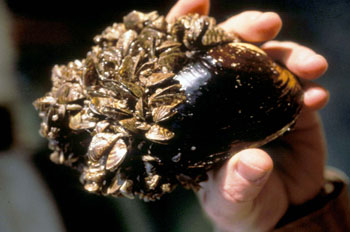
Zebra mussels were recently found in Texas. Zebra mussels are native to western Asia, and have spread throughout the Great Lakes states and down the Mississippi River. Zebra mussels attach themselves to things and multiply quickly. (An adult female can produce up to one million offspring in a year!) Zebra mussels clog pipes, pumps and water valves and are a major and expensive problem for water and power plants. (When too many zebra mussels got into a water plant, it shut down the water supply to Monroe, Michigan three times!) Zebra mussels filter water and can clear out nutrients in water needed by fish and other native species. Zebra mussels attach themselves to piers and docks, boat hulls, and as you can see in the picture, shells. In the picture, the zebra mussels are striped and have attached themselves to another shell.

Apple snails come from South America. They eat aquatic plants and can damage wetlands and carry parasites that can affect humans. They have damaged rice crops in Hawaii, so farmers and scientists are working together to make sure they don't damage Texas rice crops. The picture shows an apple snail and its eggs attached to a plant.
